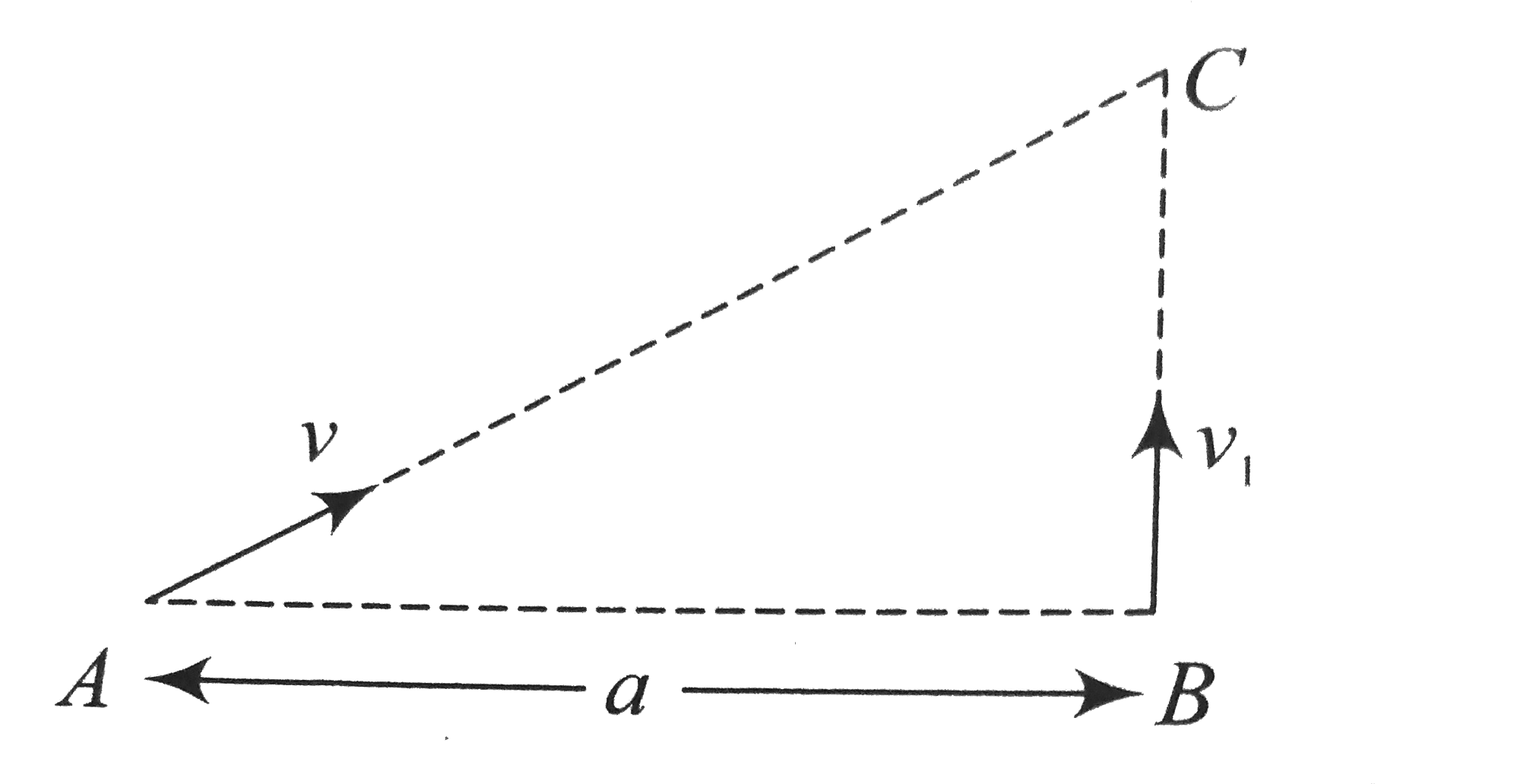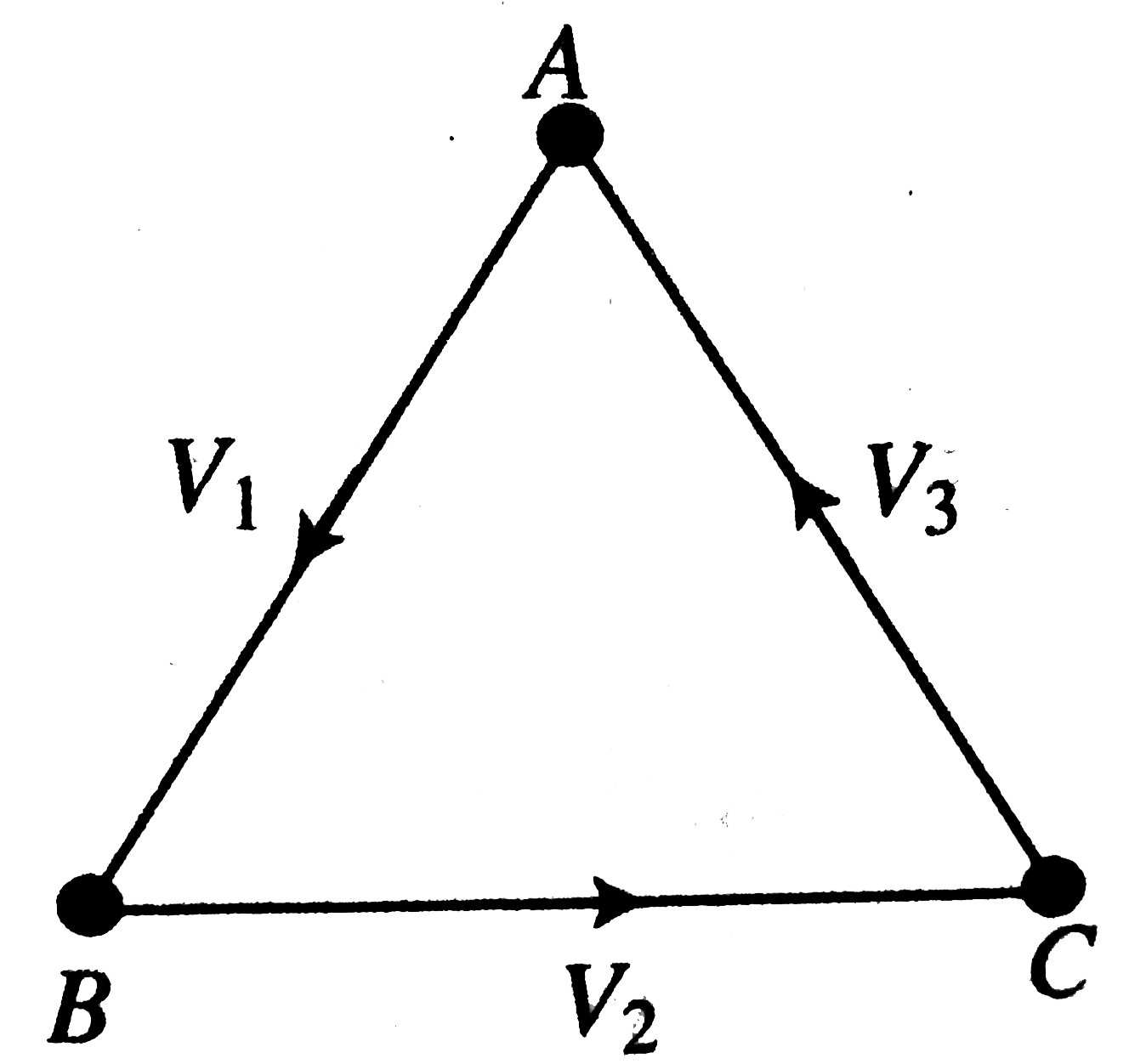Two boys are standing at the ends A and B of a ground, where AB=a. The boy at B starts running in a direction perpendicular to AB with velocity v1. The boy at A starts running simultaneously with velocity v and catches the other boy in a time t, where t is :
a/√v2+v21
√a2/(v2−v21)
a/√v−v1
a/(v+v1)
The correct Answer is:B
Let two boys meet at point C after time 't' from the starting. Then AC=vt,BC=v1t
(AC)2=(AB)2+(BC)2⇒v2t2=a2+v21t2
By solving we get
√a2v2−v21.

Topper's Solved these Questions
- BOOK - A2ZCHAPTER - GENERAL KINEMATICS AND MOTION IN ONE DIMENSIONEXERCISE - AIIMS Questions20videos
GENERAL KINEMATICS AND MOTION IN ONE DIMENSION
- BOOK - A2ZCHAPTER - GENERAL KINEMATICS AND MOTION IN ONE DIMENSIONEXERCISE - Chapter Test30videos
GENERAL KINEMATICS AND MOTION IN ONE DIMENSION
- BOOK - A2ZCHAPTER - GENERAL KINEMATICS AND MOTION IN ONE DIMENSIONEXERCISE - Assertion Reasoning20videos
GENERAL KINEMATICS AND MOTION IN ONE DIMENSION
- BOOK - A2ZCHAPTER - FLUID MECHANICSEXERCISE - Chapter Test29videos
FLUID MECHANICS
- BOOK - A2ZCHAPTER - GRAVITATIONEXERCISE - Chapter Test29videos
GRAVITATION
Similar Questions
Knowledge Check
- Question 1 - Select One
Two boys are standing at the ends A and B of a ground where AB= a. The boy at B starts running in a direction perpendicular to AB with velocity v. The boy at A starts running simultaneously with velocity v and catches the other in a time t, where t is
Aa√ν2+ν21Baν+ν1Caν−ν1D√a2ν2−ν21 - Question 2 - Select One or More
A particle moves with an initial velocity v0 and retardation αv, where v is the velocity at any time t.
AThe particle will cover a total distance v0αBthe particle will come to rest after time 1αCthe particle will continue to move for a along timeDThe velocity of particle will become v0e after time 1α - Question 3 - Select One or More
A particle moves with an intial velocity v0 and retardation αv, where v is its velocity at any time t.
AThe particle will cover a total distance v0/αBThe particle will come to rest after a time 1/αCThe particle will continue to move for a very long timeDThe velocity of the particle will become v0/2 after a time 1/α
Two points P and Q move in a straight line AB. The point P starts from A in the direction AB with velocity u and acceleration f and at the same time Q starts from b in the direction of BA with velocity u1 and acceleration f1. If they pass one another at the middle point of AB and arrive at the other ends of AB with equal velocities, then (u+u1)(f−f1)=8(fu1−f1u).
View SolutionBy what fraction does the mass of a boy increase when he starts running at a speed of 12 km h ^(-1)?
View SolutionA body A moves with a uniform acceleration a and zero initial velocity. Another body B, starts from the same point moves in the same direction with a constant velocity v. The two bodies meet after a time t. The value of t is
View SolutionA boy projects a stone vertically perpendicular to the trolley car with a speed v. If the trolley car moves with a constant velocity u, the time of flight of the stone is :
View SolutionThree particles of equal masses are placed at the corners of an equilateral triangle as shown in the figure. Now particle A starts with a velocity v1 towards line AB, particle B starts with a velocity v2 towards line BC and particle C starts with velocity v3 towards line CA. The displacement of CM of three particle A,B and C after time t will be (given if v1=v2=v3)
 View Solution
View Solution

